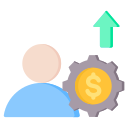Architecture and Data Flows
Start by defining employee, job, compensation, benefits, time, and cost center objects. Then map fields with clear owners, validation rules, and transformation logic. Use versioned schemas and change logs to handle promotions, leaves, and terminations. Share your trickiest field mapping challenge and we’ll propose a clean, maintainable structure.
Architecture and Data Flows
Rely on events—hire, change in pay, transfer, or termination—to trigger updates instead of nightly batch runs alone. Webhooks and message queues reduce latency, while scheduled jobs handle bulk corrections. Comment if you want a sample event catalog and retry policy template, and we’ll include it in our next post.








